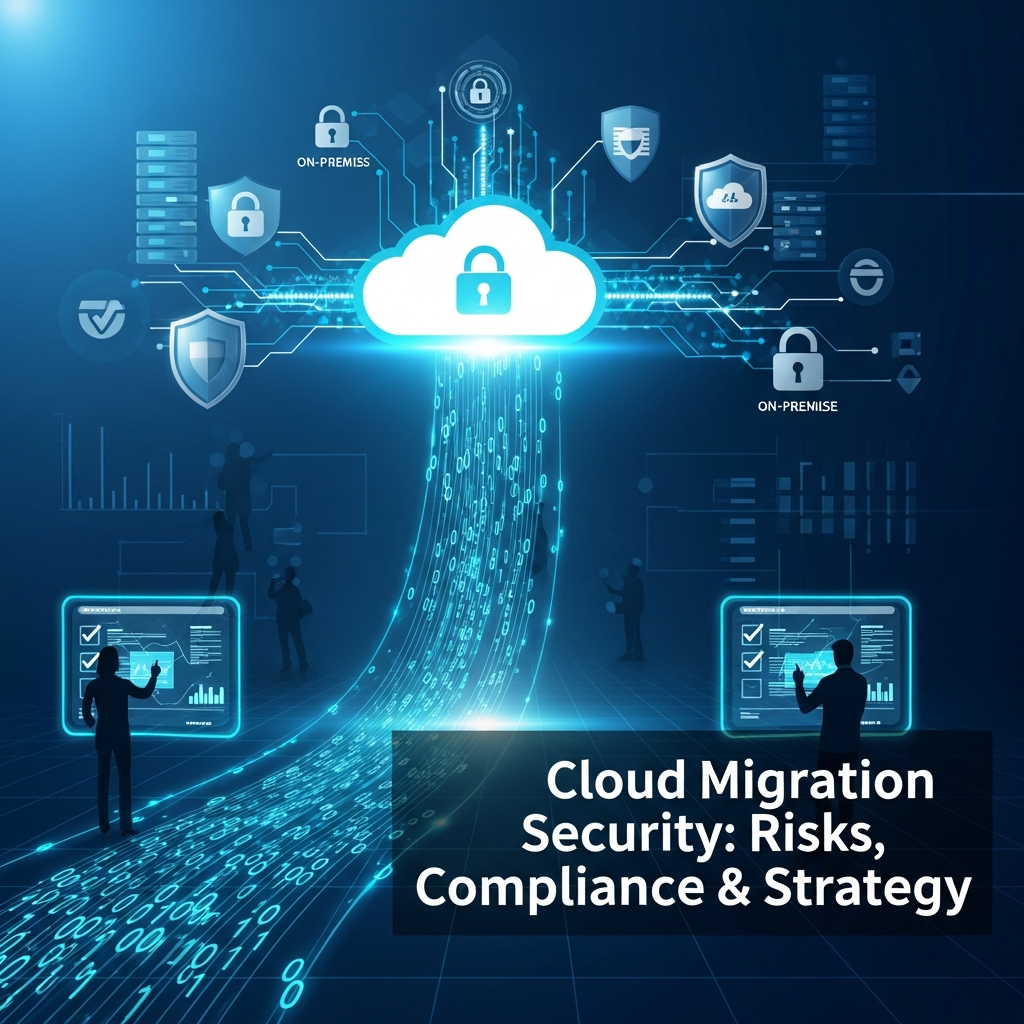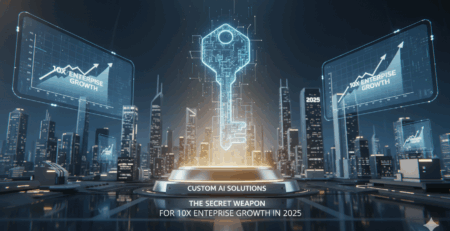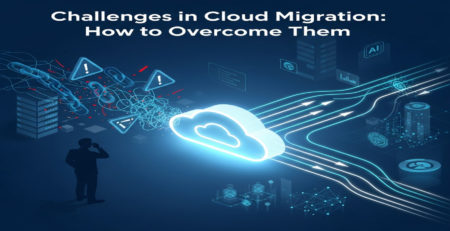Cloud Migration Security: Risks, Compliance & Strategy
DSSP2025-11-10T17:17:16+00:00INTRODUCTION
Let’s be honest, moving to the cloud isn’t just about technology anymore.It’s about trust. It’s about control. And above all, it’s about security.In boardrooms across the U.S., CIOs and CTOs are signing off million-dollar cloud migration plans, hoping for agility, scalability, and speed. But somewhere between “Go Live” and “Oops, what happened to our data?” lies the uncomfortable truth: cloud migration security isn’t as simple as it looks.
When you lift your infrastructure from on-premises to the cloud, you don’t just move data you move risk, responsibility, and reputation.So, let’s strip away the jargon and talk straight. What really goes wrong during migration? Why do smart teams still get blindsided? And how do you make sure your next cloud move is not just fast but safe?
What Is Cloud Migration Security?
Think of it like moving your entire company across town. The furniture? That’s your data. The trucks? Those are your cloud services. And the route? You wouldn’t toss confidential files into an open pickup truck, right?You’d lock them up, track the vehicle, and make sure only trusted people touch those boxes.
That’s exactly what cloud migration security is about protecting your data while it’s being packed, moved, and stored in its new digital home.
In simpler terms, it’s the combination of:
- Encryption (protecting data in motion and at rest)
- Access control (making sure only the right people see the right stuff)
- Monitoring (catching threats before they become headlines)
Sounds basic. But doing all that at enterprise scale across hybrid environments, legacy systems, and multiple cloud providers that’s where things get complicated.
Why Security Matters During Migration
Every CISO knows this: the moment data starts moving, risk skyrockets.When systems are in transition, controls loosen, visibility drops, and hackers smell opportunity. In 2024 alone, U.S. companies reported over 2,000 cloud-related breaches, many of them traced back to poor migration practices.
But it’s not just external threats.Internal missteps, wrong permissions, open ports, misconfigured buckets cause just as much damage .And here’s the kicker: most of it is preventable.Cloud migration isn’t inherently risky; unplanned migration is.
The 10 Biggest Security Risks in Cloud Migration
Let’s call them what they are not technical issues, but leadership lessons.
1️⃣ Misconfiguration
Almost every cloud breach story starts the same way: “We left something open.”An S3 bucket. A firewall rule. An admin account with no MFA.It’s not malicious, it’s human. Teams rush, corners get cut, details slip.But one unchecked configuration can expose terabytes of data.
How to fix it:
Automate everything you can.Tools like AWS Config or Azure Policy catch mistakes before attackers do.And remember the rule of thumb: “If it’s open to everyone, it’s open to everyone.”
2️⃣ Data Exposure in Transit
When you’re migrating, data moves constantly between servers, clouds, and regions. If that movement isn’t secured, it’s like driving a money truck with the doors unlocked.
How to fix it:
- Encrypt everything, always.
- Use secure tunnels (VPN, private connections).
- Validate integrity once data lands.
Treat every transfer as a high-value delivery.
3️⃣ Identity Chaos
In the cloud, identity is your new perimeter.
Forget firewalls today’s breaches start with credentials.Weak passwords, shared accounts, lack of MFA that’s where trouble begins.
Fix:
Adopt Zero Trust. Assume nothing. Verify everything.Every access request should ask: “Who are you? What do you need? And why now?”
Cloud IAM (Identity and Access Management) isn’t a checkbox, it’s your gatekeeper.
4️⃣ Insider Misuse
Let’s talk about the elephant in the room.Sometimes the threat isn’t outside it’s inside.A frustrated employee, a careless vendor, or just someone trying to “help.”
Fix:
Segregate duties.No one person should have full control of both data and approval.Log everything, watch anomalies, and don’t confuse trust with immunity.
5️⃣ Shadow IT
Marketing spins up a new SaaS app. Finance connects an unapproved analytics tool. IT doesn’t even know it exists.
Sound familiar? That’s shadow IT and it’s a hacker’s dream.
Fix:
Educate teams.
Create easy pathways for approved tools so people don’t go rogue.
Use Cloud Access Security Brokers (CASBs) to detect unknown activity.
6️⃣ Compliance Gaps
Regulations don’t take a break just because you’re migrating.
HIPAA, GDPR, SOC 2, CCPA the alphabet soup of compliance still applies.
The challenge? Each framework defines “secure” differently.Fail one audit, and fines aren’t your only problem, reputation takes the bigger hit.
Fix:
Pick a provider with certified compliance programs. Document every control.And, when in doubt, over-communicate with auditors.
7️⃣ Weak APIs
APIs make the cloud talk. But if they’re left unguarded, they can also let attackers listen.
Fix:
Use token-based authentication, throttle requests, and log every call.
Keep public APIs read-only unless absolutely necessary.And, please rotate keys like you change passwords.
8️⃣ Overlooked Monitoring
Ever driven with your eyes closed? That’s what a cloud looks like without monitoring.
Fix:
Turn on CloudTrail, Sentinel, or whatever native monitoring your provider offers.Feed logs into a SIEM for pattern detection. Automate alerts for strange behavior.If you’re reacting to security problems instead of preventing them, you’re already late.
9️⃣ Vendor Lock-In
Every cloud provider loves exclusivity. But if your whole operation depends on one ecosystem, you’re trapped.
Fix:
Use containers (Docker, Kubernetes).
Adopt open-source tools where possible.
Plan an exit before you enter. Flexibility is security too.
10️⃣ Skill Gaps and Human Error
The truth? Tools don’t fail people do.A 2025 Gartner study shows 70% of migration issues stem from lack of expertise.
Fix:
Invest in training before you migrate.
Upskill teams in DevSecOps, automation, and compliance.
Security awareness should be everyone’s job, not just IT’s.

How to Build a Secure Cloud Migration Strategy
Now that we’ve seen the risks, let’s flip the script.
Here’s how to migrate confidently without losing sleep or data.
1️⃣ Start with a Risk Map
Don’t jump straight to “lift and shift.”Take inventory: What do you own? What’s critical? What’s replaceable?Rank everything by sensitivity and dependency.Migration is chess, not checkers. Plan your moves.
2️⃣ Pick Your Model Wisely
Public cloud gives agility. Private gives control. Hybrid gives both.
If you deal with regulated data, hybrid is your safest middle ground.Don’t chase trends chase alignment.
3️⃣ Shift Security Left
The best time to secure migration? Before it starts.Embed security engineers early. Automate policy checks.Treat compliance as code not paperwork. Prevention costs pennies; recovery costs millions.
4️⃣ Automate Guardrails
Humans forget. Machines don’t.
Set automated alerts for policy violations.
Integrate CI/CD pipelines with security scans.
The goal: continuous assurance without manual babysitting.
5️⃣ Train Your People
Culture eats policy for breakfast.Teach teams why security matters, not just how it works.Celebrate secure behavior make it part of performance, not punishment.When people feel responsible, they act responsibly.
Real-World Lessons
Capital One:
They didn’t just move to the cloud; they re-built banking security for the cloud.Zero-trust access, encrypted everything, and real-time anomaly detection. Result? Industry benchmark for safe migration.
Mayo Clinic:
Handled millions of patient records by building privacy-by-design architecture.Compliance wasn’t an afterthought it was baked into every process.
Adobe:
From packaged software to SaaS, they faced insider risk and compliance chaos. Their answer? DevSecOps culture and automated auditing.These leaders proved a simple truth: security isn’t a blocker. It’s an enabler.
When to Prioritize Security
Always. But practically?Start the moment “cloud migration” leaves someone’s mouth.Security added later feels like duct tape. Security built-in feels like armor.According to Forrester, every $1 spent on early security saves $5–$7 in post-migration fixes.That’s not a stat. That’s common sense.
The Human Side of Security
You can buy firewalls and encryption keys, but you can’t buy trust.That’s earned by showing customers and employees that their data is sacred.I’ve seen teams patch systems for weeks after a breach. The damage isn’t just financial. It’s emotional.People lose confidence. Leaders lose credibility.That’s why modern security is human security. It’s communication, empathy, and shared accountability.
The Future of Cloud Security
Tomorrow’s cloud won’t look like today’s.AI will predict breaches before they happen.Quantum encryption will make theft nearly impossible.
And compliance will evolve from “audit checklists” to “real-time assurance.”But one thing will stay constant:The companies that treat security as culture, not cost, will always lead.
Conclusion
When it comes to cloud migration security, you can buy every tool and still fail or you can build a culture of vigilance and never fall behind.Security isn’t a department. It’s a mindset.Compliance isn’t paperwork. It’s proof.And cloud migration? It’s not about moving servers it’s about moving trust into a new era.Because in the end, your customers don’t care where their data lives.They care that it’s safe and that you’re the kind of company who makes sure it stays that way.















Leave a Reply